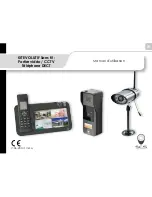
29
amPLifier
recommenDations
5
No single type of amplifier is specified for use with Project Everest
Loudspeaker systems. The speakers are highly efficient and will
operate adequately with an amplifier or receiver of 70 – 100 watts.
However, the transient response and audio definition of a high-end
system such as Project Everest will expose all the inaccuracies
and distortion in the electronic chain that precedes it. For full-
range operation, Project Everest loudspeaker systems should not
be used with an amplifier/receiver of less than 100 watts. High-
quality amplifiers/receivers of 100 – 500 watts will ensure optimal
system performance.
There is no effective limit to the power handling capabilities of
the Project Everest loudspeakers when driven by consumer audio
amplifiers. No damage will occur when used with high-powered
components. The selected amplifier(s) should have a very high
current capacity and must be capable of driving a low-impedance
load. Low output impedance is also an important criterion in
selecting an appropriate amplifier.
For bi-wiring or bi-amplification applications, four identical amplifiers
or two dual-channel units may be used, although specialized low-
frequency and high-frequency amplifiers offer clear advantages.
(If four amplifier channels are used, the high-frequency amplifier
may be up to 6dB less powerful than the low-frequency amplifier.
Due to the power-versus-frequency distribution of music, the
loudspeaker’s low-frequency section requires approximately four
times the power of the high-frequency section.)
Project Everest dealers can recommend amplification to best suit
your individual needs. In all cases, the left and right amplifiers for
each section must be identical. When bi-amping or bi-wiring,
make sure that the input sensitivity of the two amplifiers is equal
or that input level controls are provided to maintain the proper low
to mid/high balance. If two identical stereo amplifiers are chosen,
each amplifier may be located near a loudspeaker and drive low-
frequency and high-frequency sections through short wire runs.
If you are bi-amping the loudspeakers, a separate electronic
crossover network (not included) must be connected to the
outputs of the preamp/processor and to the inputs of the
amplifiers that are powering the loudspeakers’ low-frequency and
high-frequency sections. Refer to HF Drive/LF Drive in Chapter 7,
for more information.












































